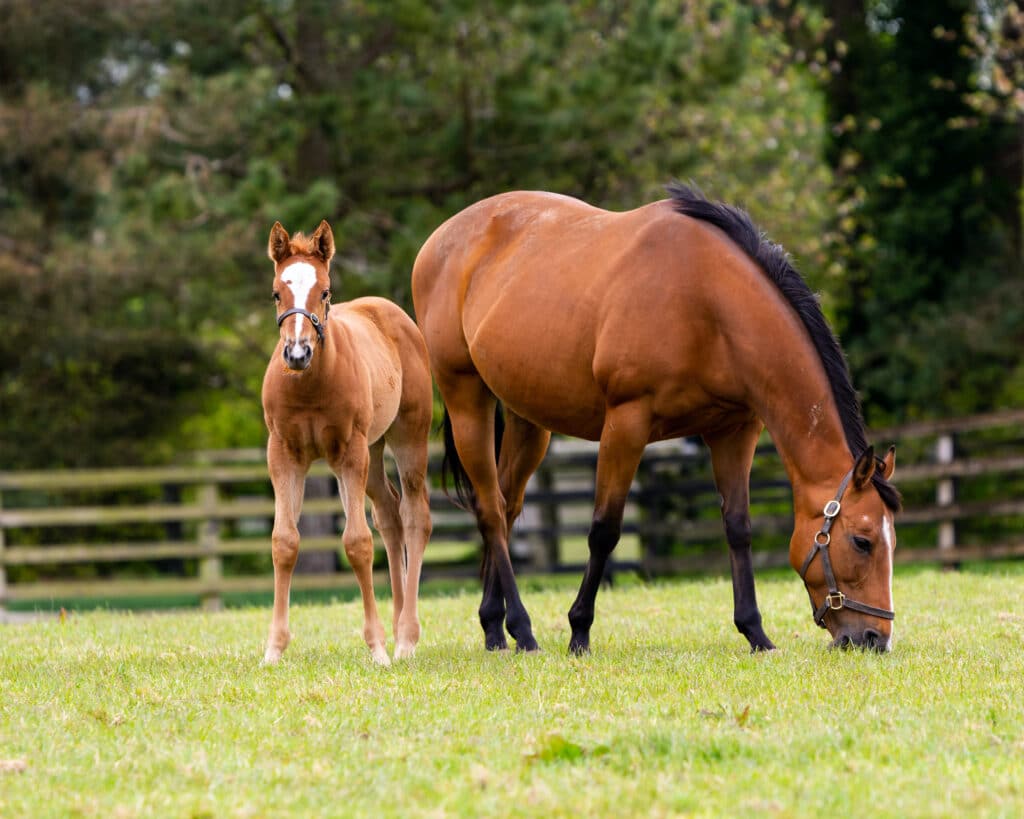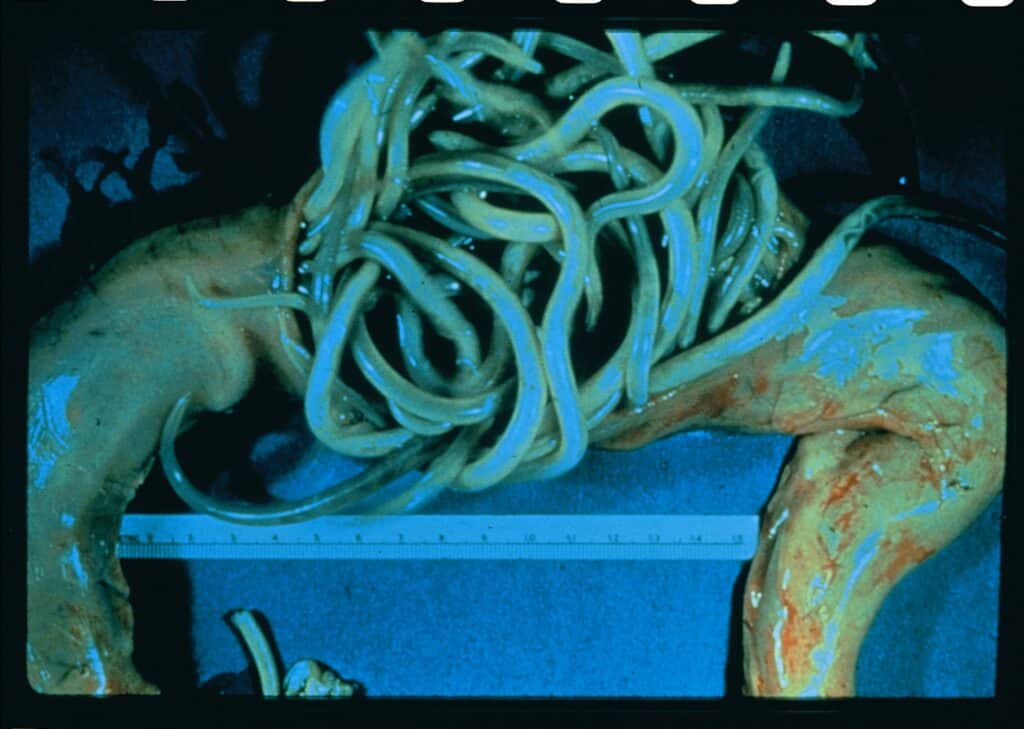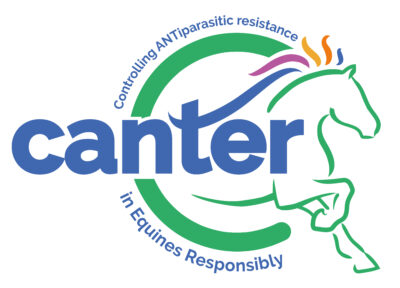Featured, Veterinary, Worming
How to worm broodmares and youngstock
Diane Gilby, Technical Director at EPLA, explains why the usual rules don’t apply when worming broodmares and youngstock
One of the most common questions on social media is how to worm broodmares, foals and youngstock. This is because standard worming and faecal egg count testing rules don’t apply in these cases, as there are different worms to take into account.

Assess the risk level
Carrying out a risk assessment is critical to deciding what is the appropriate worming strategy in this instance.
If you have a LOW RISK situation, which could be a broodmare in its own grazing where dung is collected daily and, there have been low faecal egg count and tapeworm test results, then the broodmare can carry on with a faecal egg count monitoring plan. However this should not confused with it being acceptable to stop worming and not to carry out any testing.
Broodmares in HIGHER RISK situations such as studs or livery yards without individual turnout and dung collection, should be evaluated slightly differently.
A faecal egg count should be carried out before covering to ascertain what level of worms the broodmare is carrying. These should be repeated every 8 – 12 weeks during pregnancy. However, if any of the results are above 250epg then professional advice should be sought regarding the optimum plan. This can be from your vet or an SQP, who specialises in breeding.
It is always recommended that a wormer to treat the encysted stage of the small redworm lifecycle is given during the winter period and, before the final trimester.
If a broodmare carries worm larvae or adult worms, then the risk of colic increases as the foal grows, with the highest risk being in the last trimester. As the foal takes up more space there is less room for any worm activity, which is why worming is required before the last trimester, to reduce the risk of colic.
An additional concern at foaling time is the Strongyloides Westeri worm that can cause diarohhoa in foals. The life cycle of this worm includes both the mare and foal.
The worm larvae is ingested from the pasture by the mare, and then lies dormant until triggered by the lactating mechanism.
The worm is transferred in the mare’s milk to the foal. The worm develops into an adult and lays its eggs in the foal.
It is important to understand that no eggs are produced in the mare so, the worm is only detectable in foal faeces samples. However, if it is detected then wormers must to be given to both the mare and foal.
The big debate is whether to worm the mare automatically with an ivermectin based wormer either pre or post foaling or, whether to adopt a wait and see approach, as to whether the foal develops strongyloides westeri activity, which can be detected from as early as two weeks of age.
One of the main determining factors here, is actually another worm that is a serious consideration for young foals. Ascarids or roundworm as they are more commonly known; they are white and long, and look like spaghetti.

Ascarids are one of the most common causes of serious foal illnesses or fatalities in their year of birth; – they are commonly resistant to ivermectin, which is the wormer of choice to treat stongyloides westeri. This means that …
“The more ivermectin or moxidectin are given to treat a possible infection of Strongyloides Westeri, which is very rarely life threatening, the greater the risk of developing resistant strains of ascarids, which are most definitely life threatening.”
In conclusion the recommendation would be not to treat the mare at foaling but, to carry out a two and four week faecal egg count on the foal, to determine if Strongyloides Westeri are present; then to discuss treatment with a professional.
If you are using the same mares regularly for breeding then you will soon become aware of which ones carry Strongyloides Westeri, through this approach and, they can then be targeted with treatment post foaling.
Foal worming
This then leads us to foal worming and, what to use in the first year of a young horse’s life. The requirements change as the foal develops. If at birth Strongyloides Westeri are present, then as the foal grows it is susceptible to both ascarids and other egg laying nematode worms.
Finally as it matures to a yearling, treatment should be targeted at small redworm and tapeworm, from late autumn and over the winter period towards spring.
The golden rules with youngstock
- Use faecal egg counts to determine what level and type of worms are present.
- Clear and low faecal egg counts DO NOT MEAN that worming is not required.
- Late autumn and during winter treatments for encysted small redworm and tapeworm should be given.
- Spring should commence with a faecal egg count and tapeworm test.
One of the most important things to remember with youngstock is that you don’t have the same luxury of time that you have with older equines. If you wait to see any symptoms before you give a wormer then it really is too late, and your foal will be in serious trouble.
Wormers containing Benzimidasoles [such as Panacur] and Pyrantel [such as Strongid P, Pyratape P, Embotape] are the most effective on ascarids. They should be given at regular intervals until the autumn in the year of birth. The interval should be determined by the risk assessment.
There are many factors to take into account with broodmare and foal worming and, they are different for each situation. The recommendations given on social media often do not take a risk assessment into account, nor the individual circumstances of any possible resistance or developing resistance.
It is always recommended to discuss your parasite control plan with a veterinarian or SQP who specialises in breeding and youngstock.
The CANTER website contains information on how to carry out a risk assessment or, if you require assistance with this EPLA has specialist stud management consultants available or, contact your vet or stud advisors
Read more about worming horses here
WIN WITH INTELLIGENT WORMING AND THE HORSE HUB
Every week 10 entries will win a faecal egg count test. In week four, answer all the questions correctly and follow us on Facebook, to be in with a chance to win one of our BIG prizes
PRIZE DRAW WEEK 3
THE BIG PRIZES …..
 What would you buy with a £100 voucher?
What would you buy with a £100 voucher?
Agaso designs sensibly priced, innovative & durable equestrian apparel for free spirited riders who live in the moment and never want to dismount.
Agaso breeches have been designed with over 40 years of experience training riders at the top level, thinking about the biomechanics of the rider interacting with the horse. Every detail is created for ultimate comfort in the saddle. Water resistant, durable, soft touch material with natural elasticity moulds to the contours of a rider’s body. Innovative open flat seams ensure ultimate comfort against the skin with no rubbing, with gel seat technology to create real feeling between rider and horse keeping the rider connected to the saddle.
Our new denim breeches have a soft touch material with 4-way stretch allowing superb comfort for hours in the saddle. AGASO
 The parasite control programme from EPLA is a bespoke programme written specifically for the prize winning equine. The programme is based on a complete risk assessment of the equine, its history and grazing situation together with diagnostic tests. Every test and wormer will be despatched automatically when they are due and will arrive in the mail with application instructions. Every diagnostic test result is reviewed by the consultant and the plan is proactively amended and updated throughout the year as required. INTELLIGENT WORMING
The parasite control programme from EPLA is a bespoke programme written specifically for the prize winning equine. The programme is based on a complete risk assessment of the equine, its history and grazing situation together with diagnostic tests. Every test and wormer will be despatched automatically when they are due and will arrive in the mail with application instructions. Every diagnostic test result is reviewed by the consultant and the plan is proactively amended and updated throughout the year as required. INTELLIGENT WORMING
THE WEEKLY PRIZES …..
Every week 10 correct entries will win a worm egg count test and analysis from Scientif EQ

Fatal worm disease
The threat of fatal worm disease is so serious, that for the first time in the history of the UK, an industry wide collaboration has formed. It includes retailers, vets, laboratories, universities, charities, and pharmaceutical companies, along with representation from most of our equine bodies. This is a very big deal – competing companies are putting their own interests aside to collaborate on one single truth for all prescribers and horse owners in the UK. CANTER
The Horse Hub T&Cs
All you have to do is submit your email address and answers to the question and you will be added to our mailing list and entered into the draw for this competition. We also don’t want you to miss any of our great content, which is why we have created our newsletter.
Our newsletter is sent weekly and is packed full of great content. You can remove yourself from our mailing list anytime, just let us know.

 What would you buy with a £100 voucher?
What would you buy with a £100 voucher?